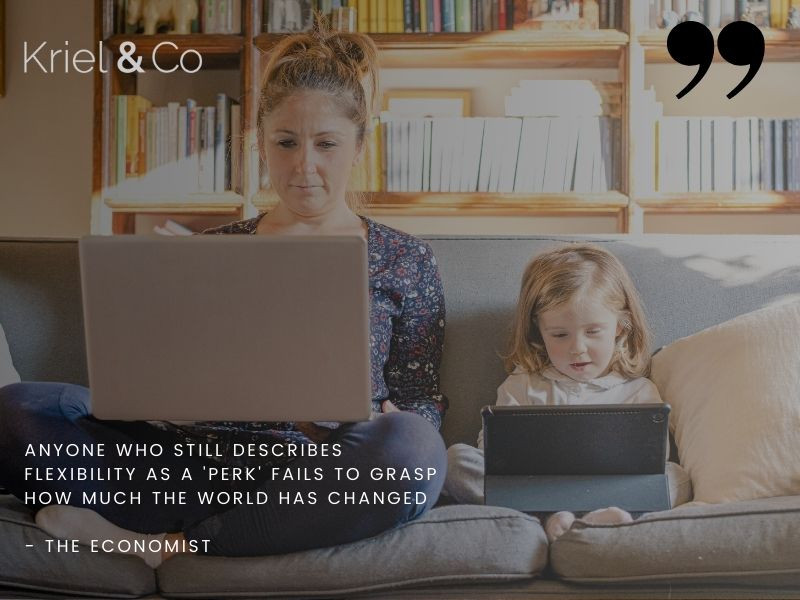Is doing business over WhatsApp really such a good idea?
06 May 2019
This article was updated on 11 January 2021
It has become evident that many people in business today are suffering from a form of communication overload or fatigue, exacerbated by the age of social media, over-sharing and marketing clutter. Many employees and executives alike have not enforced proper boundaries to better manage their inboxes. The result manifests itself into business activities increasingly being diverted from traditional email to popular instant messaging platforms such as WhatsApp, Telegram and others.
Based on our collective consulting experience, we shed some light on the inefficiencies posed by business communication over WhatsApp and the solutions you should consider for your business instead.
Diluted attention management.
One of the primary reasons why instant messaging platforms are rising in popularity within companies is the application’s effectiveness for gaining a recipient's immediate attention, driven by the 'consumerfication' of business technology in general. This trend is especially evident when a recipient of a message poorly manages his or her email box(es) and fails to respond timeously to emails or calls in general. It is a particular challenge within organizations where approval is required from a team leader, manager or executive whose communication processes aren't properly defined. So, we escalate communication to a platform where we believe we will have a greater chance of response and input. Without all those newsletters, long emails and meeting requests, your chances are probably better to get a quicker response via WhatsApp so you can get what you need to continue with your work.
The opposite is also true for the sender of the message, where a digital society promoting instant gratification constantly expects an ‘immediate’ response – with senders often purposefully circumventing traditional communication channels such email to reach the recipient purely for their own convenience. Furthermore, consider that almost every discussion involving more than two people transforms into a ‘group’ of sorts with their own notifications and clutter. In effect, this scenario leads to and endless cycle of fragmented communication and poor attention management. The human brain cannot realistically encode so many different notifications and bits of messaging meaningfully. The entire process is slowing you down.
The lack of personal and professional boundaries.
Following the overflow of communication clutter is the lack of boundaries, both personally and professionally. The instant messaging platforms in question were originally designed as social media platforms for personal use which spilled over to the business world. Consider that emails are typically associated with a more formal tone and cultural business norms, with boundaries on when it is appropriate to either send an email or to expect a response. It is, for example, expected for managers to have out-of-office responses to manage expectations of senders, and that business hours generally apply to business-related communication. Unless urgent, there is no immediate expectation for the CEO to urgently respond to an email from a team member with the latest digital trends on a Saturday morning. Yet we respond to the WhatsApp message because it appears within a more informal context, and then complain that we are not achieving work-life balance goals.
Our personal and professional lives therefore become blurred, compounded by a user’s status as ‘online/offline’. Professional boundaries are further blurred in that more casual - and often inappropriate - communication creeps into work-related conversations on WhatsApp. Considering that text-based communication does not contain many nuances of tone, expressions and body-language associated with communication, it takes only one emoticon to be interpreted the wrong way for human resources to get involved.
Voice notes further complicate the communication process in general – especially if the sender tends to ‘over-communicate’ or elaborate unstructured thoughts over long voice notes. With no-one to talk back, and 1-minute voicemail limits of old falling away, there is no sense of a natural limit to voice notes. The reality is that the process of listening, encoding and actioning items in voice notes takes longer for the recipient to encode and process. Whilst voice notes are by no means a replacement for narration, some executives forget that whilst it is convenient to share all their thoughts or instructions in a single voice note for employees to listen to as opposed to typing an email, the process costs the employee far more in productive time to action. A traditional call is sometimes even more efficient than the use of voice notes.
Security, Privacy and Lack of Data Governance.
Instant messaging platforms weren’t designed to naturally accommodate many of the digital tools, systems or environments that organisations rely on today. Business communication requires supporting material – be it file attachments, calendars, screen shots, document share, screen share, link share, video conferencing and a variety of other tools. The most popular instant messaging platforms are limited in this regard, with users often resorting to duplicating files and processes to send over WhatsApp. Whilst many platforms are also encrypted for the individual’s peace of mind, the organization has far less control over the process in how sensitive data is shared and stored on the recipient’s personal device. If employees have copies of files and data saved on personal WhatsApp accounts in the natural course of conversations, that data is much harder to control – and wipe away – in the event of dismissal or theft of the device.
If we furthermore consider that WhatsApp is owned by Facebook - a technology giant with a questionable track-record of upholding benchmark standards on protecing Personal Information of its users - it is in an organisation's best interest to instead consider more appropriate business-focused platforms geared towards protecting sensitive information.
So what is the solution then?
From our collective consulting experience, it has become evident that communication efficiency and data security is increasingly becoming a focus point in digital roadmaps for many companies – driven by POPIA compliance and work-from-home needs during the pandemic.
There are a variety of powerful off-the-shelf business-focused instant messaging platforms with the ability to truly transform communication processes, achieving a shift away from email and capturing the many benefits of instant messaging that also exist – and resonate – with a rising Millennial workforce today. Some of these off-the-shelf solutions include Slack and Microsoft Teams, some with powerful integration possibilities into third party applications, popular cloud services and other systems. The needs of larger organizations or corporates may require a more bespoke solution or platform, with companies often building proprietary systems internally.
All-in-all, these platforms have an inherent business purpose, with specific usage policies, notification management, better data security and draws clearer lines between business and personal use – leaving WhatsApp for the friends and family.
Internal platforms and communication aside, there are customers or clients who may want to reach out to your brand via WhatsApp. A different offering, called WhatsApp for Business is currently available on Android and iOS devices with a desktop interface, inclusive of innovative features such as automated responses, quick replies and more which falls part of a social media / community / customer service manager’s responsibility. The organisation therefore needs employ a competent and skilled resource representing the brand’s interactions with customers, and keeps employee’s personal accounts and profile pictures out of the public’s eye.





